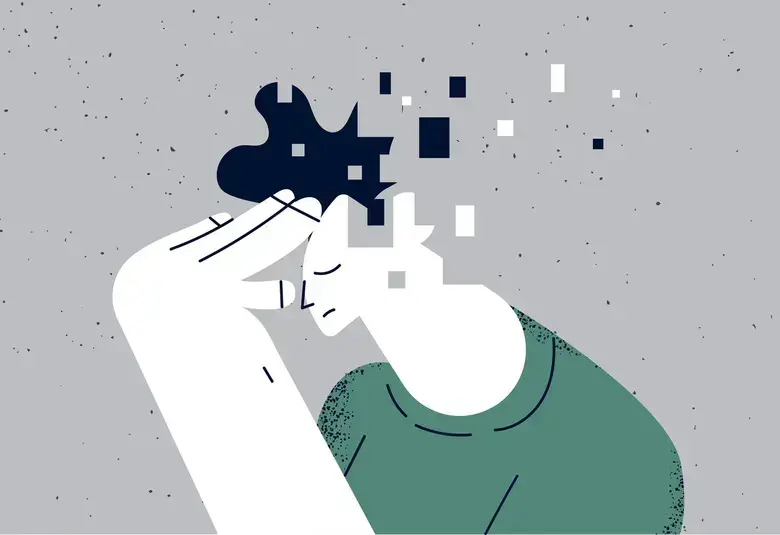That is the approach advocated by Dr Munir Khani, Associate Professor of Psychiatry at the American University of Beirut Medical Center, Lebanon, as expressed during an interview at ECNP.
체크리스트가 아닌 환자를 치료하는 것은 ENCP에서 인터뷰 중에 언급한 대로, 레바논 베이루트 아메리칸대학병원 정신의학과 Munir Khani부교수가 지지하는 접근방식입니다.
How do you diagnose major depressive disorder?
주요우울장애를 어떻게 진단하나요?
This is a problem area. Psychiatric disorders in general and depression in particular have been reduced to checklists. Doctors now are taught to treat depression, and not the patient with depression.
바로 이것이 중요한 문제입니다. 대부분의 정신 질환, 특히 우울증의 경우 질병에 대한 평가가 단순한 체크리스트에 압축되어 있습니다. 현재 의사들은 ‘우울증을 앓는 환자’가 아닌 우울증 그 자체만을 치료하도록 교육받고 있습니다.
I focus on rapport and try to gather as much information as possible, from the patient and from the family, before reaching a realistic diagnosis. I look for major vegetative symptoms, for issues relating to functioning in the family, occupation and wider society, and for a sense of whether the person is finding enjoyment in leisure activities.
실제 진단을 내리기 전에, 저는 관계를 중요하게 생각하고, 환자와 가족으로부터 가능한 한 많은 정보를 얻으려고 합니다. 저는 주요 자율신경 증상과, 가족, 직장 및 사회에서의 기능수행과 관련된 문제들과, 환자가 여가활동을 하면서 즐거움을 느끼는지 여부를 알아보고자 합니다.
I am also very concerned to see if there is any suicidal ideation. That is a possibility in every patient, and we must assess its level.
또한, 저는 환자가 자살을 생각하는지도 매우 중요하게 살핍니다. 모든 환자들은 자살 시도의 가능성이 있으므로 우리는 반드시 그 가능성을 평가해야 합니다.
What challenges do you face in treatment?
주요우울장애 환자를 치료할 때 가장 어려운 점은 무엇인가요?
A problem we have in our hospital practice is that we generally have no real contact with the patient’s general practitioner. That relationship needs to be consolidated. The family physician may already have made a diagnosis of depression – in which case we need to confirm it -- and perhaps started treatment. By the time patients get to us, some have already tried several antidepressants and may have almost given up on treatment.
병원 진료 시 우리가 직면하는 문제는 일반적으로 환자를 가까이에서 보는 일반의(general practitioner)와 실질적으로 연락하지 않는다는 것입니다. 일반의와 정신과 전문의는 서로 긴밀히 연락할 필요가 있습니다. 환자의 주치의는 이미 우울증이라는 진단을 내렸을 수 있으며 이 경우 우리는 이 진단을 확인할 필요가 있습니다. 어쩌면 이미 치료를 시작했을 수도 있습니다. 정신과 전문의를 만나기 전 환자가 이미 여러 항우울제를 사용했을 수 있으며, 치료를 포기한 환자들도 있을 수 있습니다.
Comorbidities are also a major problem. These can be psychiatric, or medical, or both. If you don’t take care of issues such as substance abuse, you’ll get nowhere in treating the depression.
동반질환도 중요한 문제입니다. 이러한 동반질환은 정신적인 문제이거나 의학적인 문제이거나 또는 두 가지 모두에 해당될 수 있습니다. 의사가 환자의 약물 남용 등의 문제를 간과한다면, 우울증은 치료되지 않을 것입니다.
Another issue is the cognitive decline of patients. We have not had a sensitive scale to assess function. The ideal is full neuropsychological testing, but that is an expense patients are reluctant to bear. The Hamilton and Beck scales, for example, don’t pay much attention to cognition. The THINC-it® tool should be given a chance and may prove to be what we really need.
또 다른 문제는 환자의 인지기능 저하입니다. 기능을 평가할 수 있는 적절한 척도는 없습니다. 전반적으로 신경심리 검사를 하는 것이 가장 좋으나, 비용이 상당하여 많은 환자들이 검사 받기를 거부합니다. 예를 들어, 해밀턴(Hamilton) 척도와 벡(Beck) 척도는 인지기능을 자세히평가하지 않습니다. THINC-it® 검사법을 이용할 수 있는 기회가 제공되어야 하며, 이를 통해 이 검사법이 우리가 실제로 필요한 것임이 입증될 수 있을 것입니다.
Do you combine pharmacological treatment with psychotherapy?
약물치료와 심리치료를 병행하나요?
Yes. Treatment should be holistic and reflect every aspect of life, not just the depression. People with depression are human beings, just like us.
그렇습니다. 치료는 단순히 우울증만이 아니라 환자의 삶의 모든 측면을 반영하여 총체적으로 진행되어야 합니다. 우울증 환자들도 우리와 마찬가지로 사람입니다.
We refer most of our patients to a psychologist for individual or family psychotherapy, and that makes a huge difference. There have been great advances in this field. CBT is very à la mode.
대부분의 환자를 개인 또는 가족단위의 심리치료를 받도록 심리학자에게 의뢰하며, 이러한 심리치료는 큰 차이를 가져옵니다. 이 분야에서는 큰 진전이 있었습니다. CBT가 가장 최신 유행 방식입니다.
We also use ECT in cases of resistant depression, and in MDD with psychotic symptoms or suicidal ideation.
우리는 저항 우울증 환자, 그리고 정신병적 증상 혹은 자살의도를 보이는 주요우울증(MDD) 환자에게 ECT를 합니다.
A key issue is the need for early treatment. Delay promotes chronicity. Once depression is prolonged, the anatomical changes in the brain may not be reversible, whatever you do.
핵심 사안은 치료가 조기에 시작되어야 한다는 것입니다. 치료를 늦출수록 질병 만성화가 촉진됩니다. 우울증이 지속되면, 뇌의 해부학적 변화는 어떠한 방식으로도 돌이킬 수 없습니다.
How do you define remission?
관해(remission)를 어떻게 정의하나요?
Not just as relief of symptoms. A lot of patients who are essentially asymptomatic – and this goes for bipolar too – are still way down on functionality. So I look at personal, family and social circumstances; and for a positive emotional state, and restored interest in work, for example. I hate reducing psychiatry to a checklist. But it is what residents are being taught!
관해(remission)는 단순한 증상 완화가 아닙니다. 이는 양극성 장애에 해당하기도 하는데, 기본적으로 증상이 없는 많은 환자들이 여전히 기능수행을 잘 하지 못합니다. 따라서 예를 들면, 긍정적인 감정상태 그리고 업무에 대한 흥미회복 등과 같은 개인, 가족 및 사회적 상황을 살펴봅니다. 저는 다양한 정신과적 증상이 체크리스트로 압축되어 다루어지는 현실이 안타깝습니다. 하지만 수련의들은 그렇게 배우고 있습니다!
저희 담당자는 과학적 근거를 토대로 심포지엄의 주요 자료를 선정합니다. 본 페이지의 의견이 반드시 룬드벡의 의견을 반영하지는 않습니다.




